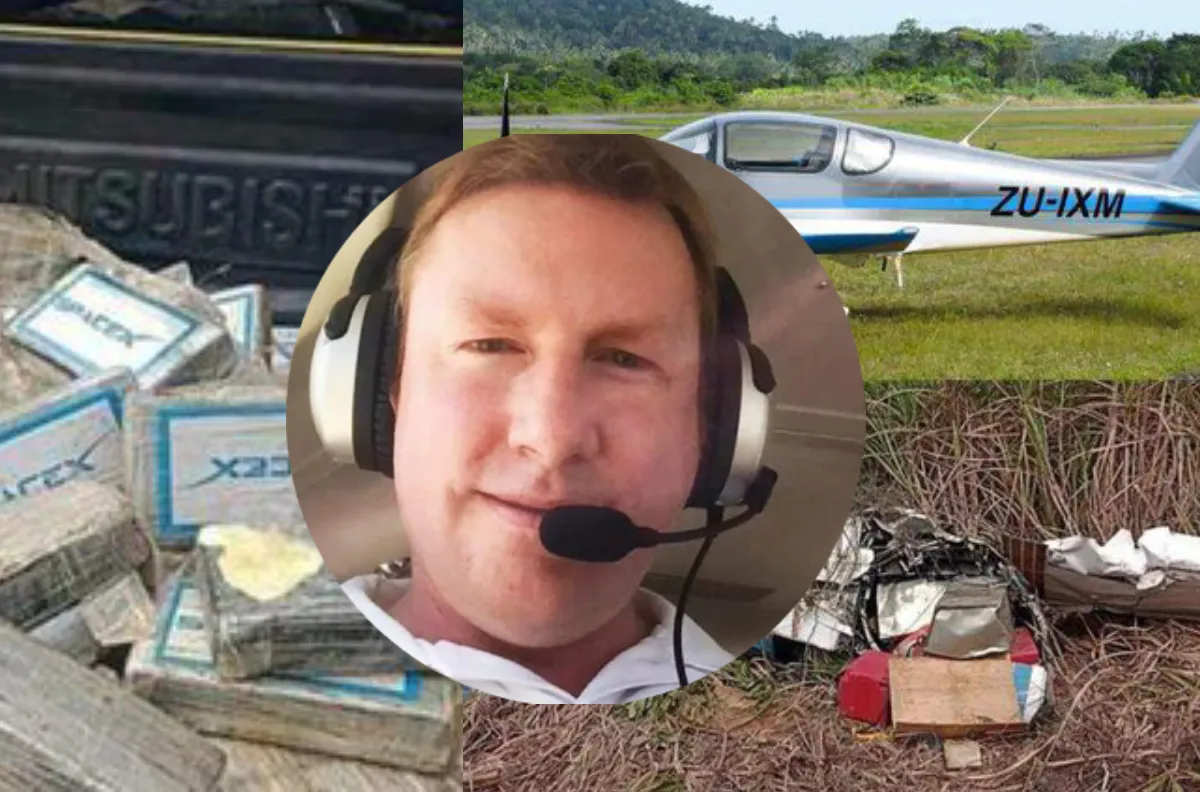The secret life of Timothy James Clark pilot – hidden cocaine empire revealed

The secret life of Timothy James Clark pilot – hidden cocaine empire revealed
A seemingly easy-going Australian pilot, who often mingled with locals at Stellenbosch airfield, led a secret life as a high-stakes cocaine trafficker—until a fatal crash in Brazil brought his billion-rand operation to an abrupt end.
The Man Behind the Mask
Timothy James Clark, 46, appeared as a casual aviation enthusiast. Known for his scruffy hair and laid-back charm, he was a familiar face at the Sling aircraft factory in Alberton and often joked with fellow aviators. Friends recall a modest man who occasionally sported expensive shoes, while his social media projected a life of glamour from Cape Town to Bali.
Yet beneath this ordinary exterior, Clark orchestrated a sophisticated international cocaine-smuggling network.
A Plane Built for Crime
Clark’s Sling aircraft, designed for four passengers, had been extensively modified. Three seats were removed and replaced with long-range fuel tanks, enabling marathon transatlantic flights. The aircraft regularly travelled from Brazil to Africa with stops in Namibia and South Africa, ferrying up to 200 kilograms of cocaine per trip. Each successful journey reportedly earned him around R8.6 million.
Adding to the deception, the cocaine was packaged in fake SpaceX-branded bricks, a tactic to mislead authorities and disguise the product’s true origin.
Brazil: An Australian pilot, Timothy James Clark, died in a plane crash in Coruripe, Alagoas, with 180 kg of cocaine onboard.
The drugs, packaged with SpaceX branding, were recovered from the wreckage of a Sling Aircraft D8 Sling 4 TSI registered in Zambia, which had been… pic.twitter.com/9kVmI3QA4V
— Crime Intel (@WorldCrimeIntel) September 15, 2025
The Fatal Flight
On 14 September, Clark’s final flight ended in tragedy. His Sling aircraft crashed into a sugarcane field near Coruripe, Alagoas, Brazil, carrying cocaine valued at approximately R920 million. Brazilian authorities, who had been tracking his low-flying, transponder-free trips, only intercepted the operation after the crash. Clark, flying alone, died instantly.
The plane’s wreckage showed signs of engine failure, though investigators are still examining the exact cause. Its remote location delayed the initial response, complicating recovery efforts.
A Global Operation
Records indicate the aircraft had logged roughly 1,200 flight hours, suggesting Clark completed up to 30 transatlantic journeys, potentially netting over R250 million. In addition to the Sling, he maintained a Beechcraft King Air 350 registered in Malawi for ostensibly legitimate flights.
In Australia, Clark held multiple directorships across investment and trading companies. While some remain active, others were deregistered in recent years, adding to the mystery of his financial network.
Stellenbosch and the Western Cape: Emerging Cocaine Hubs
Experts warn that regions like Stellenbosch and Saldanha are increasingly becoming cocaine offloading points. Julian Rademeyer of the Global Initiative Against Transnational Organised Crime noted that gang violence in these areas often correlates with rising drug trafficking activity. Clark’s operation highlights how international networks exploit such regions.
Investigation Underway
Brazilian authorities are probing the aircraft’s ownership, its flight path, and potential links to regional drug syndicates. The Australian Federal Police are examining possible ties to organised crime back home. Investigators are also scrutinising Clark’s other aircraft and business dealings to determine the full scope of his trafficking network.
Frequently Asked Questions (FAQ)
Q: Who was Timothy James Clark?
A: Clark was an Australian pilot, appearing as a casual hobbyist in South Africa, but secretly ran a global cocaine trafficking network.
Q: How did he transport cocaine?
A: Using a modified Sling aircraft with long-range fuel tanks, Clark carried up to 200 kilograms per trip, often disguised with fake SpaceX branding.
Q: How much was the cocaine worth?
A: The cargo from his final flight was valued at approximately R920 million (~$80 million).
Q: Why did the plane crash?
A: Preliminary investigations suggest engine failure, but authorities are still determining the exact cause.
Q: Was he involved with criminal networks?
A: Clark’s flights followed known drug routes in Namibia, Mozambique, and South Africa, indicating possible ties to international syndicates.
Q: How did authorities catch him?
A: Brazilian police had been tracking his irregular, transponder-free flights. The crash ultimately revealed the extent of his operation.
Q: Was anyone else involved?
A: Clark was alone during the fatal flight. Investigations are ongoing to determine the wider network’s involvement.

